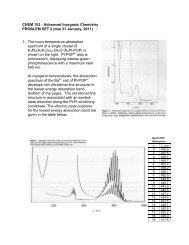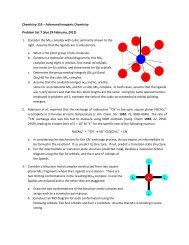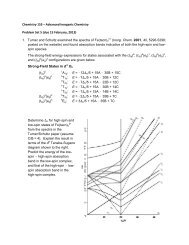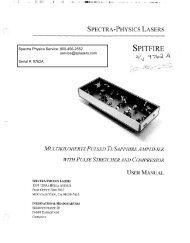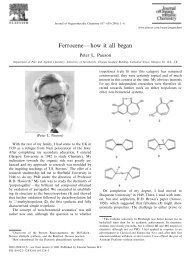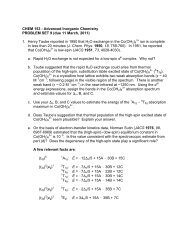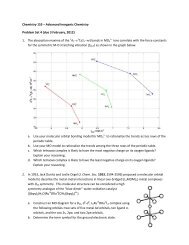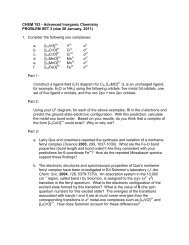Tsunami - Beckman Institute Laser Resource Center
Tsunami - Beckman Institute Laser Resource Center
Tsunami - Beckman Institute Laser Resource Center
You also want an ePaper? Increase the reach of your titles
YUMPU automatically turns print PDFs into web optimized ePapers that Google loves.
Pulse Width Measurement<br />
-%<br />
GVD Compensation in Measurement<br />
of Ultrashort Pulses<br />
Because the pulses produced by the <strong>Tsunami</strong> laser are extremely short<br />
(c 80 fs), the pulse broadening in optical materials from GVD makes<br />
measurement of its true pulse width difficult. Also, because the GVD of<br />
glass causes the pulse width to broaden, the pulse that reaches an experimental<br />
sample after traveling through beam splitters, lenses, etc., may not<br />
be the same pulse that is measured in the autocorrelator. It is thus important<br />
to ensure that the measurement technique and experimental set up<br />
incorporate the same amount of glass and some GVD compensation if the<br />
shortest pulses are to be measured and delivered to a sample.<br />
Even before the pulse leaves the laser, it travels through extra glass. For<br />
example, if we assume the pulse in a <strong>Tsunami</strong> laser is at its shortest as it<br />
passes through the coating of the output coupler, it then travels through the<br />
output coupler substrate, the photodiode beam splitter and the output<br />
window. For the <strong>Tsunami</strong> laser, the total thickness of these optics is about<br />
1.9 cm (0.75 in.). Thus, a pulse that is 60 fs at the output coupler coating<br />
becomes 66 fs by the time it exits the laser. Include the glass of the<br />
autocorrelator and that in any experimental setup and the pulse can be<br />
broadened substantially.<br />
Since most autocorrelators use beam splitters, a lens, and often a spinning<br />
block (as in the Model 409 -08), the pulse is also broadened before it is<br />
measured. This means the pulse out of the <strong>Tsunami</strong> may be actually<br />
shorter than that indicated by direct measurement. Consequently, GVD<br />
must also be compensated when using an autocorrelator.<br />
Since the sign of GVD in material is generally positive for the wavelengths<br />
produced by the <strong>Tsunami</strong> laser, introducing negative GVD into the beam<br />
path compensates for the broadening effect of the material. Negative GVD<br />
can be introduced into a system with prism pairs, grating pairs, or a Gires-<br />
Tournois Interferometer (GTI). The prism pair provides the easiest, lowest<br />
loss means for compensating for the positive GVD of materials.<br />
To compensate for pulse broadening from materials, a simple setup using<br />
two high index prisms (SF-10) is all that is necessary. Figure B-4 shows<br />
the layout (top and side views) for an easily built pre-compensation unit.<br />
The laser pulse travels through the first prism where different frequency<br />
components are spread in space. Then the broadened pulse travels through<br />
the second prism, strikes a high reflector, and reflects back along its original<br />
path-with one exception. The high reflector is slightly tilted in the<br />
plane perpendicular to the spectral spreading and causes the pulse to travel<br />
back through the prisms at a slightly different vertical height. After the<br />
beam returns through the first prism it is reflected by another mirror to the<br />
autocorrelator andlor the experiment.



